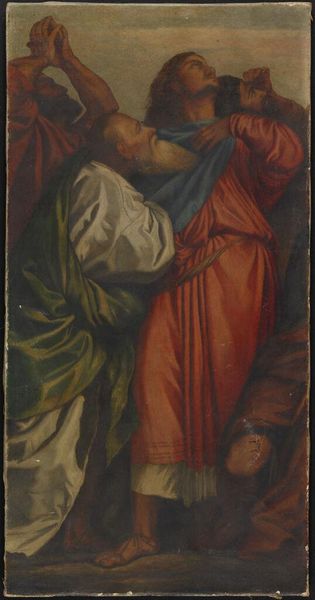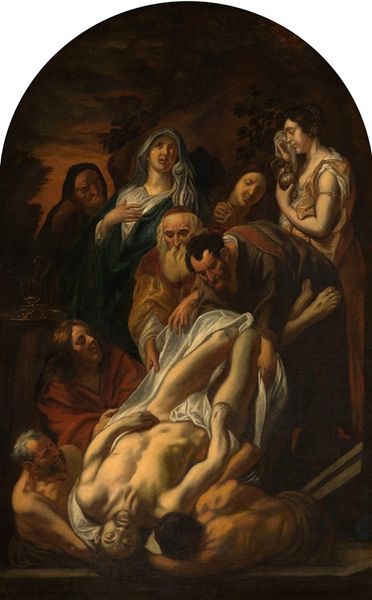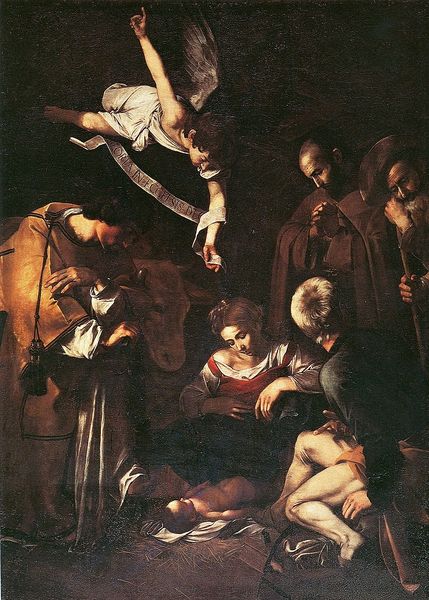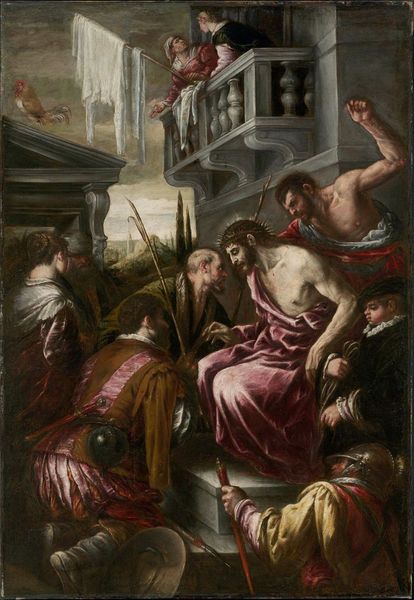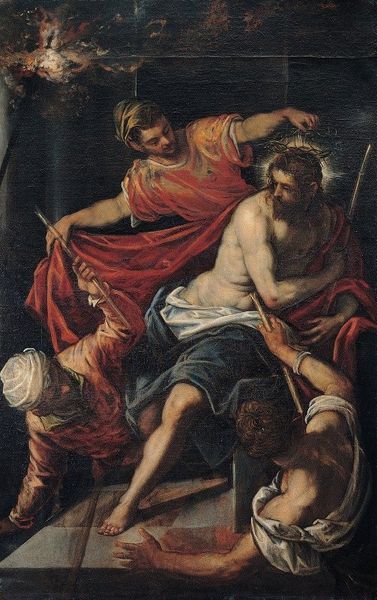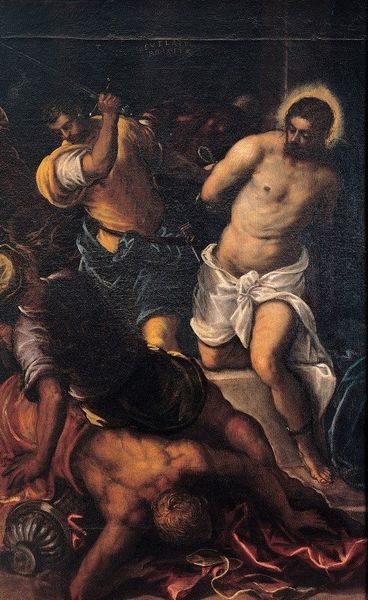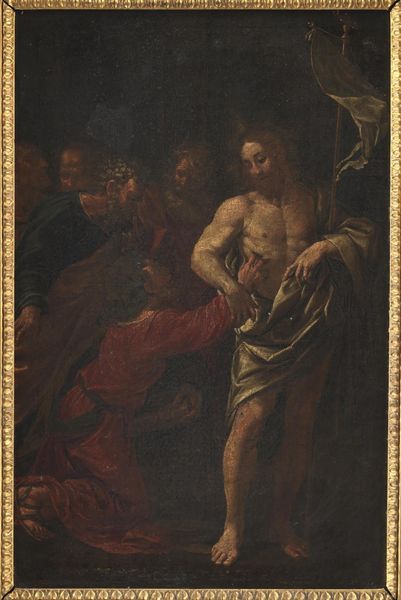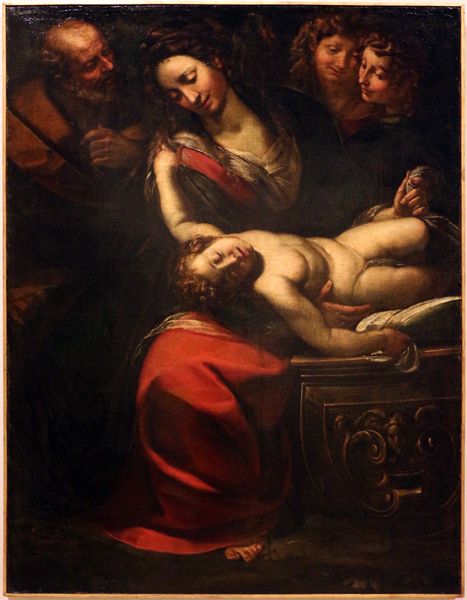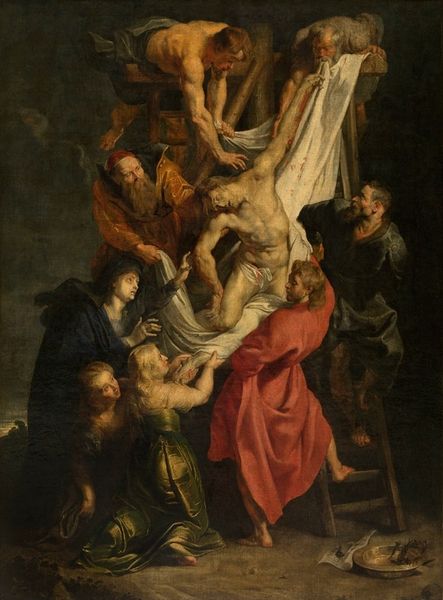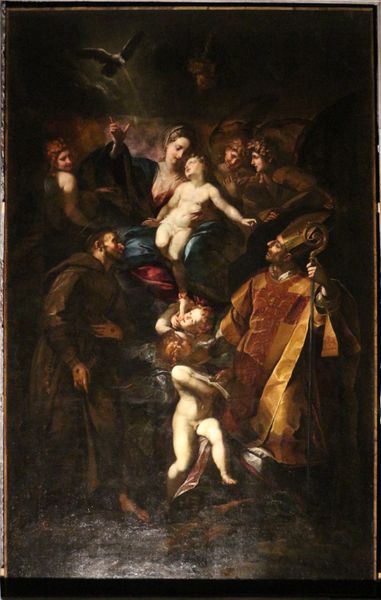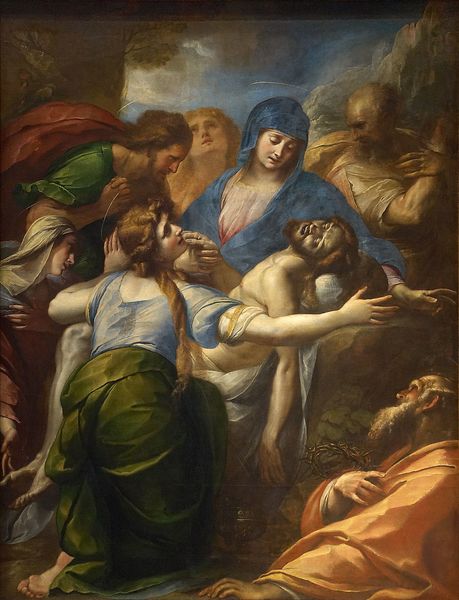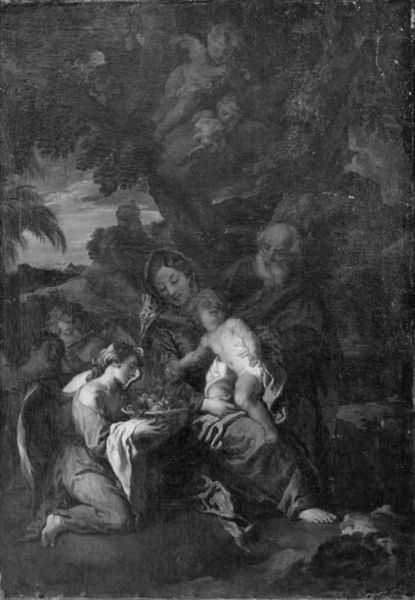
oil-paint
portrait
baroque
oil-paint
figuration
oil painting
chiaroscuro
history-painting
portrait art
Copyright: Public domain
Caravaggio painted this depiction of the Mocking of Christ, sometime around the early 1600s, capturing a scene rife with symbolic weight. The crown of thorns, pressed cruelly onto Christ's head, is not merely an instrument of torture, but a potent symbol of derision, inverting the concept of royalty and divinity. The gesture of the figures surrounding Christ, their hands raising sticks to tighten the thorns, echoes motifs of aggression found across cultures and eras. One finds such gestures in ancient Roman depictions of conquered enemies and even in the medieval Danse Macabre, where death taunts the living. This recurring motif speaks to a primal human impulse: the urge to dominate and humiliate. Consider how the crown of thorns has evolved from a symbol of mockery to one of profound religious significance, representing Christ's sacrifice and suffering. This transformation reveals the complex interplay between collective memory and subconscious processes, demonstrating how symbols can be reshaped and reinterpreted across time. The emotional intensity captured in Christ’s downcast gaze is a powerful force, engaging us on a subconscious level, revealing how pain and suffering can be transformed into symbols of redemption.
Comments
No comments
Be the first to comment and join the conversation on the ultimate creative platform.
